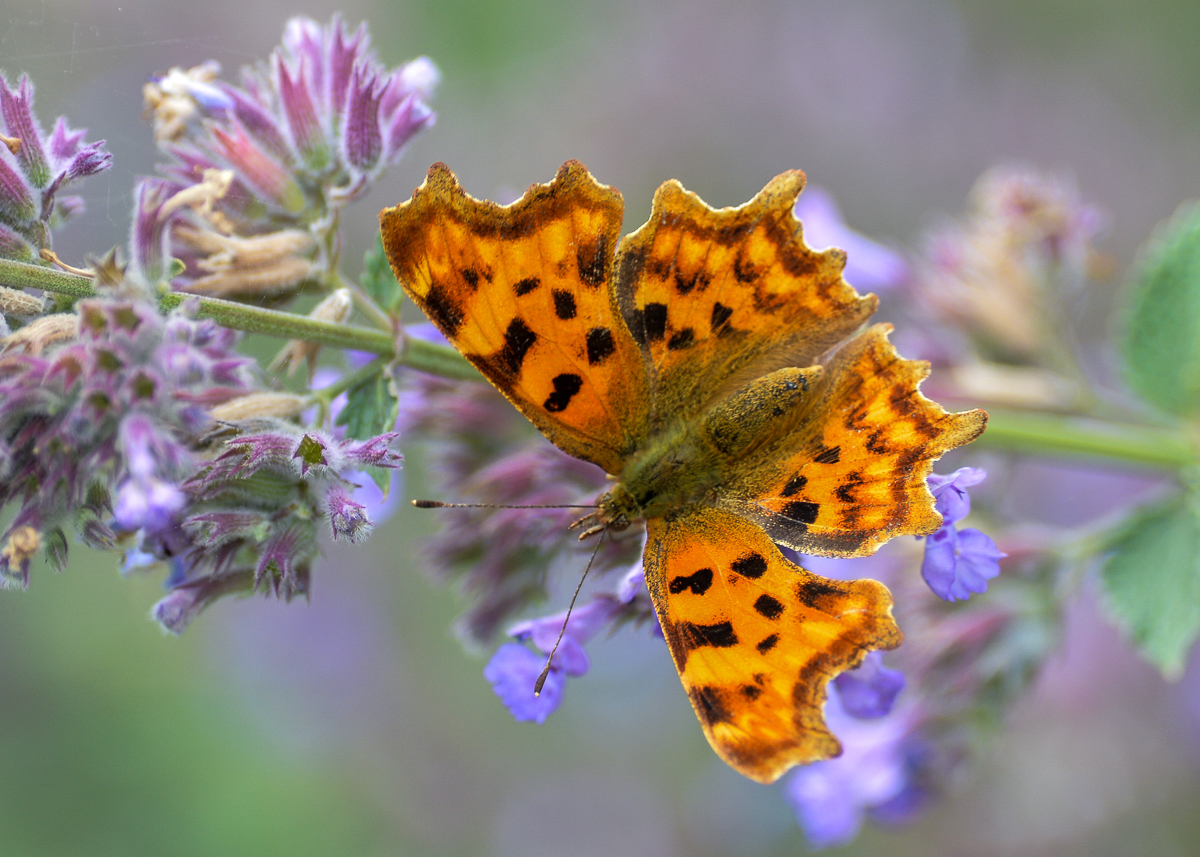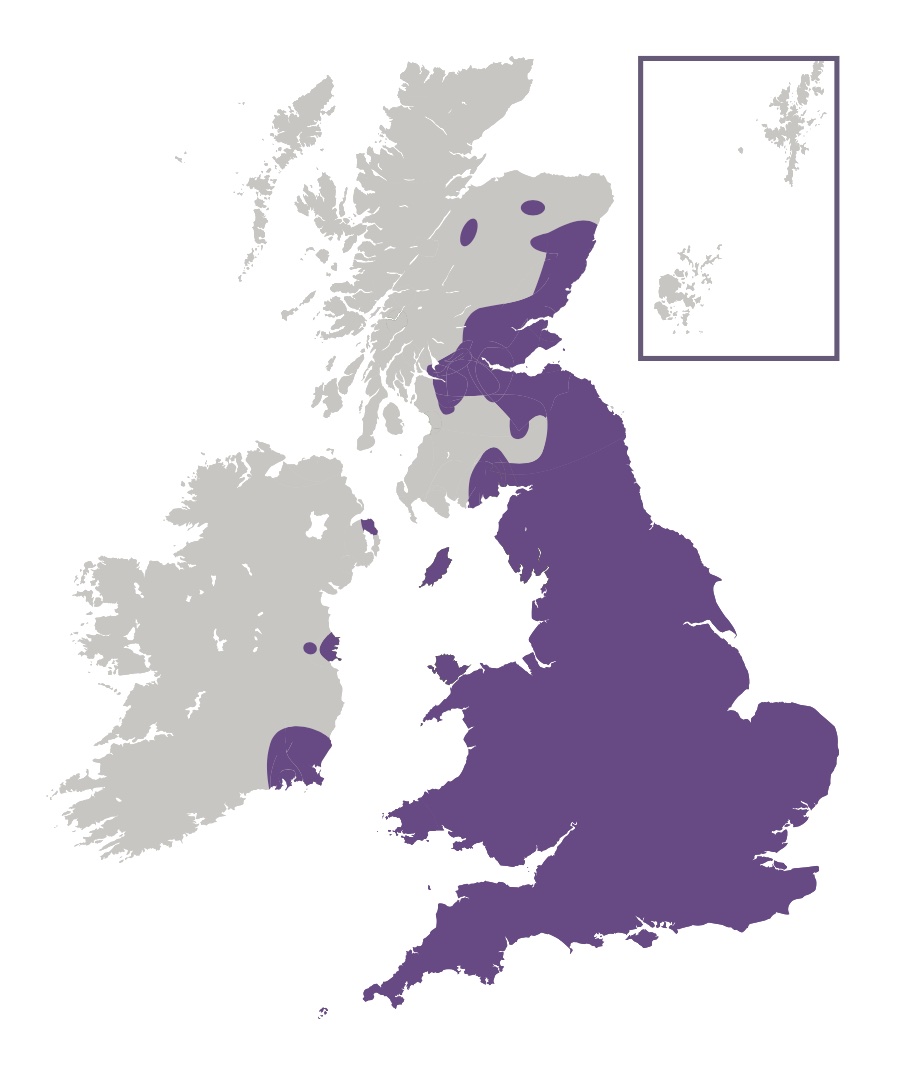
Photo © KEC
Looking like a tatty Small Tortoiseshell, the Comma is now a familiar sight throughout most of England and Wales and is one of the few species that is bucking the trend by considerably expanding its range. The butterfly gets its name from the only white marking on its underside, which resembles a comma. When resting with wings closed this butterfly has excellent camouflage, the jagged outline of the wings giving the appearance of a withered leaf, making the butterfly inconspicuous when resting on a tree trunk or when hibernating.
This butterfly was once widespread over most of England and Wales, and parts of southern Scotland, but by the middle of the 1800s had suffered a severe decline that left it confined to the Welsh border counties, especially West Gloucestershire, East Gloucestershire, Herefordshire and Monmouthshire. It is thought that the decline may have been due to a reduction in Hop farming, a key larval foodplant at the time. Since the 1960s this butterfly has made a spectacular comeback, with a preference for Common Nettle as the larval foodplant, and it is now found throughout England, Wales, the Isle of Man and the Channel Islands and has recently reached Scotland. There have also been a few records from Ireland.
After emerging from hibernation, both sexes search out nectar sources, such as Sallow flowers or Blackthorn blossom. They also spend a good amount of time basking, favourite surfaces being tree trunks, wood piles, dead bracken and fence posts.
The male butterfly sets up a territory, often on the sunny side of a woodland margin or at the junction of two woodland rides. Here he will sit on a favourite perch awaiting a passing female and will fly up to investigate any passing insect. The male will also make short flights - always returning to the same perch. Even when disturbed, the male will fly off for several metres or so before predictably returning to exactly the same leaf. When egg-laying the female makes short fluttering flights over the foodplant, stopping every few feet, landing on the foodplant and, if suitable, laying a single green egg.
Those adults that hibernate take a good deal of nectar, building up essential fat reserves that will see them through the winter. They are often seen feeding from garden flowers or fruit, such as blackberries or fallen plums. They eventually search out woodland where they find a suitable location in which to hibernate such as a tree trunk, branch, hollow tree or log pile.

This is primarily a woodland butterfly, where it can be seen along woodland rides and country lanes. However, especially in late summer, the butterfly is frequently seen in gardens where it feeds in on nectar sources to build up its fat reserves before entering hibernation.
Adults feed primarily on brambles (Rubus spp.), Buddleja (Buddleja spp.), Ivy (Hedera spp.), knapweeds (Centaurea spp.), Rotting fruit (N/A), thistles (Carduus spp. and Cirsium spp.) and Wild Privet (Ligustrum vulgare).
The primary larval foodplant is Common Nettle (Urtica dioica). currants (Ribes spp.), elms (Ulmus spp.), Hop (Humulus lupulus) and willows (Salix spp.) are also used.
